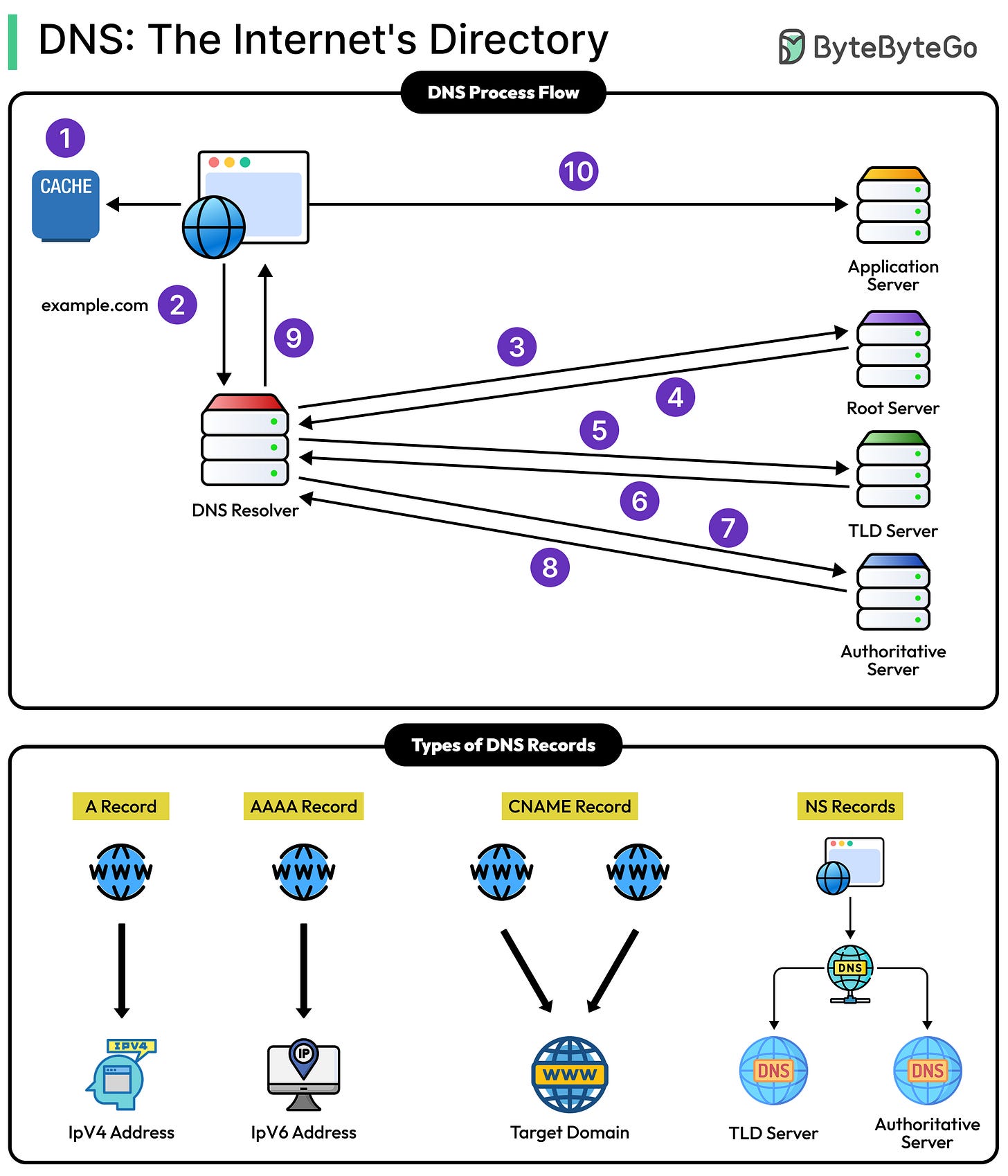Domain Name System: The Internet’s Telephone Directory
Every time someone opens a browser and visits a website, sends an email, or uses a mobile app, they’re relying on DNS.
This invisible system has processed thousands of requests on their behalf today alone, translating human-friendly names like google.com into the numerical IP addresses that computers actually use to communicate. Without DNS, the modern internet would be unusable.
DNS, or Domain Name System, is often compared to a phone book. Just as a phone book translates names into phone numbers, DNS translates domain names into IP addresses. This analogy captures the basic concept, but DNS is far more sophisticated. Unlike a static phone book, DNS is a massive, distributed, real-time database that handles billions of requests per second globally. It routes traffic across continents, enables load balancing across servers, and provides the foundation for how services find each other on the internet.
The critical nature of DNS became painfully clear in October 2016 when a cyberattack on Dyn, a major DNS provider, knocked out access to Twitter, Netflix, Reddit, and dozens of other major services. The websites themselves were functioning perfectly, but without DNS to translate their names into addresses, users couldn’t reach them. It was like having every street sign in a city suddenly disappear.
In this article, we will look at the journey of a DNS query in detail, the various DNS records, and the role of Anycast in DNS.
Journey of a DNS Query
Keep reading with a 7-day free trial
Subscribe to ByteByteGo Newsletter to keep reading this post and get 7 days of free access to the full post archives.


